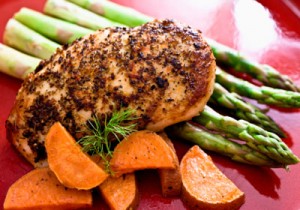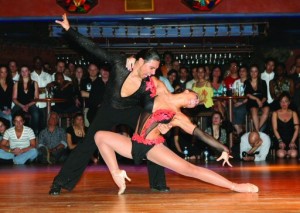Dancers, like most other athletes, need to be in great shape to perform their activity. Whether you dance for fun or competition this article will reveal 5 things you need in order to put on your best performance.
Be STRONG
Dance is a relative strength activity, meaning the stronger you are relative to your bodyweight the better your potential to perform. The stronger you are the less energy you will have to expend with your moves and the more body control you will have.
Focus on lifting in the 3-5 rep range for 4-5 sets to increase strength and coordination of movement. This rep range is great for strength and less so for mass gain – this is what you want if you’re trying to improve relative strength.
Good Body Composition
In any activity which requires you to control the position of your body, body composition will play a huge role. By shedding excess body fat you will gain more control over your body, and with more control comes more balance and speed; all things needed to be a great dancer.
Eat protein and veggies with every meal, limit your starchy carbs to post workout, and drink lots of water (if you dance salsa you already know this one!). These guidelines will improve your body composition, health, and help your performance on the dance floor.
Strong Core
Having a strong core is crucial to being good at pretty much anything physical. The role of the core is to stabilize your spine (think dips) and to transfer force between the upper and lower body (think turns). Throwing out your back during a dip is a compensation for weak core stability and improper positioning; this goes for both leads and follows.
If the core is weak then the force transferred from your legs will dissipate on its way up to the shoulders when performing a turn. This results in your body not turning in one piece and will throw off your balance and slow you down. For follows, when being led through a turn, the force the lead gives you will not reach your legs and cause a similar problem.
Focus on core exercises which create tension and resist flexion, extension, and rotation. Exercises that train this are planks, pallof presses, chops and lifts, deadlifts, and unilateral or offset loaded movements.
Aerobic Capacity
In the gym the amount of training you can do is greatly determined by what is called work capacity. The greater your work capacity, the more optimal training you can do before becoming exhausted. People with good work capacity are able to complete the amount of work required to progress, and the same goes for dance. The more quality dance practice you can accrue before exhaustion the better. So how do we improve dance work capacity?
Having a good aerobic system will help you recover in between dances and dance sessions. The aerobic capacity needed will depend based on the type of dance and whether you compete or just dance recreationally. A good start is including some sort of cardiovascular exercise in your weekly routine. We like circuits with short rest periods for this purpose. A circuit is composed of a series of strength movements performed in rounds. They’ll build muscle, burn fat, and improve your aerobic capacity – great for dancers!
Here’s a sample circuit you can try:
1a. Goblet Squat x20s Regression: Bodyweight squat
1b. Push Up x 20s Regression: Elevated Push up
1c. Bent over DB Row x 20s Progression: Inverted Row using a barbell or TRX/Rings
1d. Plank x 20s Regression: Planks on elevated surface, Progression: Plank get ups
Rest 60s in between rounds. Repeat 4 times.
Note: This was taken from a week long program I wrote for Fit Chicks. You can find the rest of the program for free here.
Proper Posture
Improper posture not only looks bad but it can negatively affect your performance as well. When your body structure is not in the correct position it can restrict movement, waste energy, and make you more prone to injuries. In terms of the visual aspect of dance, improper posture will impair the styling and display of the performance. Body language portrays confidence and can be the difference between okay and amazing.
The most common postural issues lie in the shoulders/thoracic spine and the pelvis. Due to all the sitting we do we are constantly hunched over, ending up with rounded shoulders and tight hip flexors that pull us out of alignment. Most people would benefit from more thoracic spine extension, upper back work, anterior core stability, and glute activation.
Here’s a sample warm up that you can use before your workouts and even on off days:
Soft tissue work with foam roller or ball for pecs, lats, and hip flexors
Thoracic Extension-Rotation x 10 ea. side
Hip flexor stretch 2 x 15s
Plank 2 x 15s
Glute bridge/Hip Thrust x 10
Conclusion
Focus your training on improving these things to put yourself in the best position to perform well. A strong body that moves well + lots of technique practice = a great dancer!
PS.
Our gym has a dedicated dance space for practice. Check us out for dance specific strength training!




